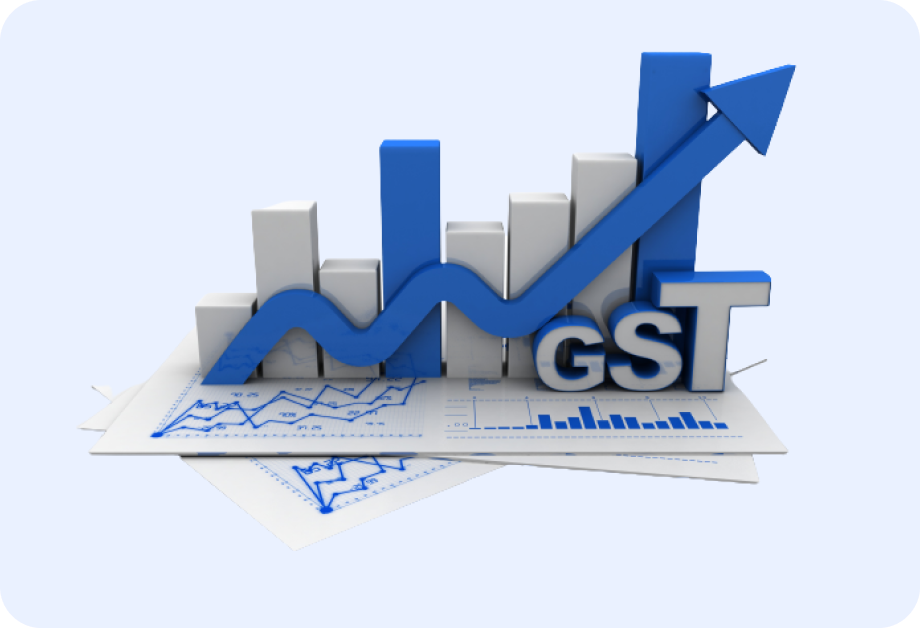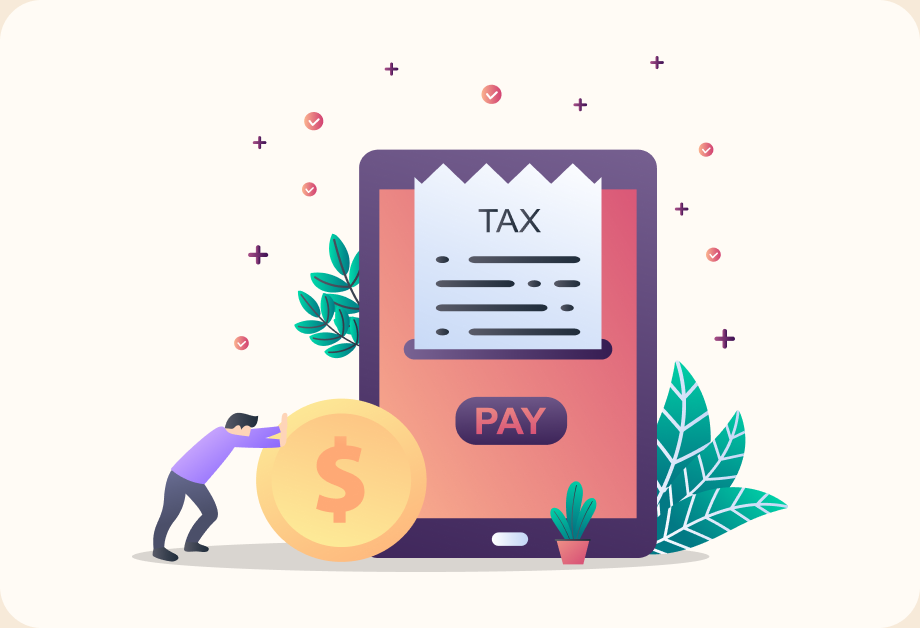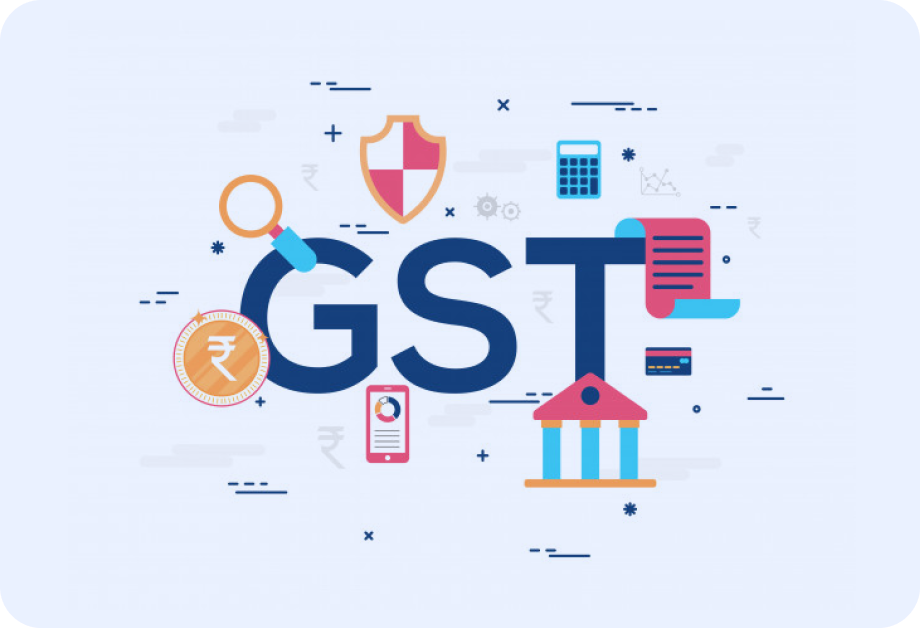All you need to know
about GST
Understand GST with myBooks complete GST guide. GST is an essential parts of every business.
Check all GST latest updates here!
The Complete GST Guide
From the blog
All you need to know about GST
FROM GST BLOG
All you need to know
about GST
GST is considered to be the most important segment when it comes to the business. GST benefits not only the large businesses!

Latest Update
Lorem ipsum dolor sit amet, consectetur adipiscing elit. Ut elit tellus, luctus nec ullamcorper mattis, pulvinar dapibus leo.
Lorem ipsum dolor sit amet, consectetur adipiscing elit. Ut elit tellus, luctus nec ullamcorper mattis, pulvinar dapibus leo.
Lorem ipsum dolor sit amet, consectetur adipiscing elit. Ut elit tellus, luctus nec ullamcorper mattis, pulvinar dapibus leo.

Basics of GST
In order to follow all the GST requirements, everyone needs to file GST returns from time to time.
In this article, we discuss GSTR 9, GSTR 9a, GSTR 9b, and GSTR 9c annual returns with the latest updates.
We have presented the GST FAQs for most enquired GST-related questions and answers.
E-way bill is the GST version of Waybill, which covers both intra-state & the inter-state consignment
Although the end consumer bears the final burden of the tax, the supplier must first file the tax.
(ITC) is one of the most prominent features of the newly introduced GST tax system in India
GST Tips
Financial management is the comprehensive tracking of all income & expenses & it is the pivot for businesses
GST Tax Bill or Invoice is the primary proof of supply document that gives a supply of goods & services list.
GST Tax Bill or Invoice is the primary proof of supply document that gives a supply of goods & services list.
The Government has got praised for this tax regime system that has brought new dimensions to our nation.
GST Impacts and Benefits
The amount of tax liability of small and mid-size businesses can lead to the bankruptcy of such businesses.
You can think of the Goods and Service Tax as a multi-stage, comprehensive, and destination-based tax levied for every value added.
There are numerous benefits of the GST to small businesses; they are even the most affected by the new tax regime.
The goods and service tax happens to be India’s greatest tax reforms since the nation gained independence.
Know more about GST
The economy in India underwent the greatest tax reformation with the introduction of GST (or Goods and Services Tax)
It has been over two years since the implementation of the New Goods & Service Tax (GST) Regime.
GST is the most sensational news since July 2017. Some welcomed the decision, and a lot more criticism as well.
GST exemptions are applicable for 3 cases – GST exemption on goods, the exemption granted on services, GST exemption granted to individuals/businesses.
- For business
- Aggregate Turnovers
- For Goods
- For Services
GST Exemption for business
GST exemption for businesses/individuals is granted if they have less than the specific amount on their annual aggregate turnover. The GST exemption limit for the supply of goods for businesses has been increased to Rs.40 Lakhs, and for the hilly and northeastern states, the exemption limit for the supply of goods is Rs.20 lakhs. For business, the supply of services the GST exemption is Rs.20 Lakhs for all other states exempt hilly and northeastern states. Whereas for hilly and northeastern state remains Rs.10 Lakhs.
Aggregate Turnovers GST Exemption
Here follows the aggregate turnover of business exemption during calculation.
• If investors pay any of CGST SGST or IGST.
• Goods and services inward supply values.
• Reverse charge mechanism based on tax payable.
• Person making non-taxable goods/services supply.
GST Exemption of Goods
The GST exemption for goods will change periodically. The rules of GST exemption for goods will vary depending on the goods whether it is GST exempt, zero-rated, considered as a non-GST supply, or nil rated. In most cases, process readymade apparel goods silk made are taxable and unprocessed goods are GST exempt such as raw silk.
GST Exemption for Services
Here follows GST exemption for services
If the person makes Non-Taxable/ Non-GST supplies, then comes under GST exemption. Eg: Petrol, Natural gas, diesel, electricity and so on.
If the person makes business with the common items such as unprocessed food (Eg: milk, rice, wheat, etc.,) education, healthcare excluding medicines, hotel or lodges with a charge of less than Rs.1000, traveling in train for both sleeper and local, Bangles/bindis/similar products, coloring/drawing books, all will be the exemption GST services list
Only small business people are eligible for small business GST concession. The following are the GST concession for small business entities,
- Cash basis GST accounting
- Instalment GST Payments
- Shared annual income tax
The Goods and Services Tax (GST) is a unified, destination-based indirect tax system practiced in India. This tax is levied on the goods and services, adding value at each stage of the supply chain. As goods and services pass from the supplier to the consumer, they are taxed indirectly. The consumer who is at the end of the chain has to pay only the GST charged by the previous supplier. This comprehensive tax replaces all other indirect taxes. The central excise duty, state VAT, central sales tax, purchase tax, and many others are all covered. The GST returns is a document that the tax authorities for calculating tax liability. As a business person or firm, filing a GST return should be a priority. The GST law stipulates that traders, manufacturers, or service providers in India register under GST to file returns. Details of their sales, purchases, and paid taxes must be furnished with the administrative authorities. This process has to be done electronically on the GST portal.
- Registration
- Online GST Filing
- Filing a Nil GST Return
Only registered individuals can file returns. It is mandatory for every company or individual that supplies goods and services to register under GST. If your business has an annual turnover that exceeds Rs. 20 lakh you have to register under the GST Network. This is applicable to all Indian states other than the north-eastern states. A unique Goods and service 15-digits Tax Identification Number GSTIN will be given to you upon registration. This registration identifies you as a supplier who can avail input tax credit. It also allows you to collect GST from recipients of goods and services. To register, go to the GST portal.
GST returns can be filed in different forms based on the nature of the transaction and registration. The GST regime requires that businesses file two monthly and one annual GST returns. The main returns to be filed are GSTR-3B and GSTR 1. GSTR 3B is to be filed every month and GSTR 1 on a monthly or quarterly basis. The registered entities will be required to file GST returns even if the entity has not done any business during any period.
Remember! Be more conscious while filing GST. Try to avoid the most common accounting mistakes to have accurate GST filing. Before tapping to the next, check twice.
Types of returns under GST include;
- GSTR-1 for outward sales due by the 10th of the next month
- GSTR-2 for purchases, due by the 15th of the next month
- GSTR-3 for GST monthly return along with taxpayers, due by the 20th of the next month
- GSTR-4 for composition taxpayers’ GST quarterly return
- GSTR-5 for non-resident foreign taxpayers to make periodic GST returns
- GSTR-6 for input service distributors
- GSTR-7 for TDS
- GSTR-8 for e-commerce operators
- GSTR-9 for annual returns due on December 32 of the next financial year
Note: The most important GST reports i.e GSTR 1, GSTR 2, GSTR 3B, and GSTR 9 are the common GST reports which should be known to all types of businesses.
You need to have records of the related sales and purchases invoices for the given period. This is because GST returns require these monthly, quarterly, or annually.
- Visit the GST official portal online
- Click on the “services” button
- Click on “Return dashboard”
- Fill up the financial year and the period of return filing
- Select the type of return you wish to file for
- Click on “prepare online”
- Enter the number of fees and late fees if there are
- Click on “save” if you have filled in all the details
- A message will be displayed to indicate that your success.
With or without sales, purchases or a turnover, GST return must be filed. It is used to show that you fall below the taxable income. As a result, you did not pay taxes during the period. If you have less than Rs.2.5 lakhs of income in a year, you are not required to file NIL return. However, it is recommended that you file NIL return, even if the taxable income is less than Rs.2.5 lakhs, if you had filed in the previous year. You will input zero values in all the relevant fields of your GST Return form online. Failure to file this on time will lead to a penalty of Rs. 100 per day.
Here is the announcement made by the union budget in 2022 on Feb 1st, 2022. Once CBIC notified, the changes will come into practice.
This amendment defines that the GST registration will be canceled/ignored by the officer.
It announced the condition for furnishing details for GSTR 1 outward supply and transmission of such information.
As passed in March 2017 and came into effect in July 2017, GST is a form of indirect tax which places tax burdens on businesses with more than Rs. 20 Lakhs in turnover. Note that the requirement is Rs. 10 Lakhs in some states. In simple terms, businesses and individuals with an annual turnover in excess of Rs. 20 Lakhs are captured under the GST tax regime. Upon registration, you will be provided a unique 15-digit GST Identification Number. Of the numerous benefits of registering for GST, being a legally registered and recognized supplier stands out. In order for you to have a seamless GST registration process, we have put together a step by step guide to help you register online.
- Who Register
- Document Needs
- Reg. Process
- Penalty
Who Should Register For GST Online?
Quite a number of businesses are captured by the GST regime, the following businesses, individual and entities are expected to register for GST online;
- Businesses with turnover captured by the threshold
- Anyone who has been paying tax under the reverse charge mechanism
- E-Commerce aggregate suppliers
- Casual taxable persons
- Individuals captured under the previous tax regimes
- Supplier and input service distributors
Documents Required For Online GST Registration
As part of the online registration process, you are expected to upload the following documents;
- PAN Card of the applicant
- PAN Card, Aadhaar Card and Voters card of the promoters/partners
- Proof of address in form of utility bills, rent or lease agreement
- Bank statement of the individual, or firm.
- Partnership deed or certificate of incorporation.
- Digital signature
- Proof of address of the business location
Step By Step Process of Registering For GST Online
- Start by visiting the GST portal and click on Register Now, you’ll find it under Taxpayers (Normal).
- Next is to click on New Registration and choose, Taxpayer. In the following drop down, choose your state and district. Followed by entering your Business name as it is on your Certificate of business registration, and also the PAN. Input the email address and phone number of the business, through which you will receive the One Time Password. End this step by clicking on Proceed
- The next step is for the OTP, you should note that separate OTP will be sent to both the email address and phone number supplied. You must have access to the two during the registration process. In the event that you did not receive the OTP, click on Resend OTP for a fresh OTP.
- At this point, you will be provided with a Temporary Reference Number (TRN) on the registration page. The TRN will also be sent to your email address and phone number. Note down the TRN, as it is important to the registration process.
- Here, head back to the GST portal and enter the TRN along with the captcha, then proceed.
- Another OTP will be sent to the registered email address and phone number. Enter the OTP, then proceed.
- Next is to see the registration status. The status will be shown as draft, click on the edit icon.
- You will be prompted to upload all the document and fill in some details. Upload all the documents as listed under the “Documents Needed For GST Registration Online”.
- Upon uploading the documents and filling the details, move to the Verification Page. Tick the declaration and submit the application either by DSC as a company, through e-Sign, where OTP will be sent to the Aadhaar number, or using EVC, where OTP will be sent to the registered phone number.
- You will see a success message displayed and the Application Reference number will be forwarded to the registered email address and phone number.
Penalty For Not Registering For GST
Failure to registered for GST will be treated as a tax offense and the tax offender will pay 10% of the tax amount subject to Rs. 10,000. When it is a clear case of tax evasion, the offender will have to pay 100% of the tax amount. There’s also a penalty attached for the delay in registering for GST. Offenders will pay Rs. 200 daily for the period delayed, but the maximum will be Rs. 5000. In all, there are 21 offenses under GST, all of which have attached penalties.
Truly, GST has changed in a big way how business is done in India. The GST tax reform was implemented with the primary intent of collapsing previous tax regimes into a single structure. Initially, the new tax structure left most confused mostly due to a lack of knowledge as to how the new tax regime will function and help businesses. Nonetheless, more than ever before GST has made business analytics and taxation easier. It’s void of the complicated forms of taxation that businesses and individuals are subjected to. One interesting part of the GST is the Input Tax Credit which businesses are currently excited about. By registering for GST, you can also reduce your tax expenses by claiming input tax credit from the government. The beauty of Input Tax Credit lies in the easy process.
- Working
- Filing Process
- ITC can’t be claimed
- When to claim
How Input Tax Credit Works
For every purchase you make for your business, upon which you pay GST, you are entitled to Input Tax Credit. With the credit, you are bound to pay lower taxes to the government. Let’s create an analogy of how the GST works;
- For every Rs 30000 on business expenses, you collect back Rs 3000.
- Let’s now assume you sell goods worth Rs. 300,000 to your client, you own Rs. 15,000 to the government.
- In the process of filing for the GST, you account for Rs 15,000, from which the government deducts Rs. 3000 and you are expected to pay Rs. 12,000.
Anyone registered for GST is entitled to claim the Input Tax Credits, Even if your business doesn’t have the threshold of Rs 10 Lakhs in turnover, you can still register for the GST and claim input tax.
How To File For Input Tax Credit
In order to claim the Input Tax Credit, you have to file for the GSTR2 and GSTR3 Returns. For the GSTR2, you will input a record of all the business expenses upon which you have paid GST. This would have been automatically filled based on the information your suppliers who are also on the GST have provided to the government. Whenever you sign in to the GST Portal, you should have access to these records. Look over these records to ensure they are correctly filled. If there are adjustments to be made, make them and remit the form.
For the GSTR3, this can be done after few days that you have remitted the GSTR2. The information on the GSTR3 is populated using information from the GSTR1 and GSTR2. While the GSTR1 has all the sales you’ve made and GST collected, the GSTR2 contains business purchases upon which you are eligible for Input Tax Credits. The GSTR3 puts it all together and shows your liabilities which is the total GST to be paid. Simply put, the formula is GSTR1 (Collected) Minus GSTR2 (Paid) to arrive at the GSTR3.
NOTE: Know more about how to claim ITC (Input Tax Credit) in GST here.
When Can’t You Claim Input Tax Credits?
This is where things become complicated. You may not be able to claim input tax credits on all purchases even if they are made for your business. For the following, you cannot claim input tax credits;
- Food and Beverages
- Motor Vehicles
- Car Rental
- Health and Life Insurance
- Beauty Care
- Travel benefits for employees
- Outdoor catering
- Health services
- Work contract services for immovable properties
- Plastic and cosmetics surgery
- Fitness club memberships
When To Claim Input Tax Credits
In as much as you have the goods in your hands or they have been paid for, you can file for Input Tax Credit. So also, your supplier must have paid for the GST collected from you before you are eligible to file for the tax credit. This means that you may need to exercise some patience before filing for input tax credits. This is to allow for proper payment and filing of the records.


























